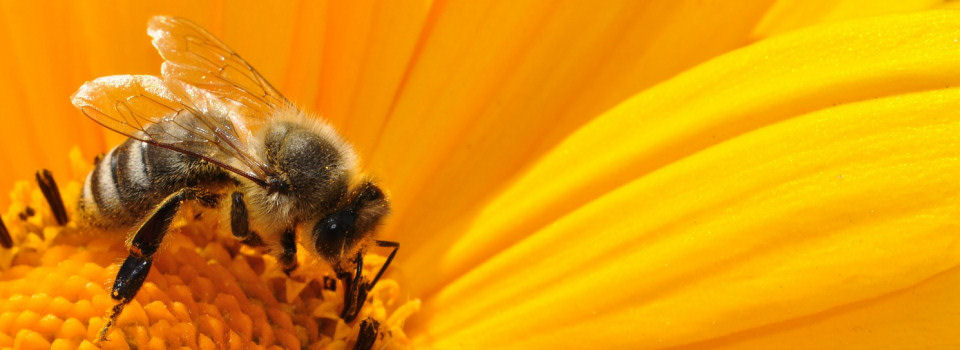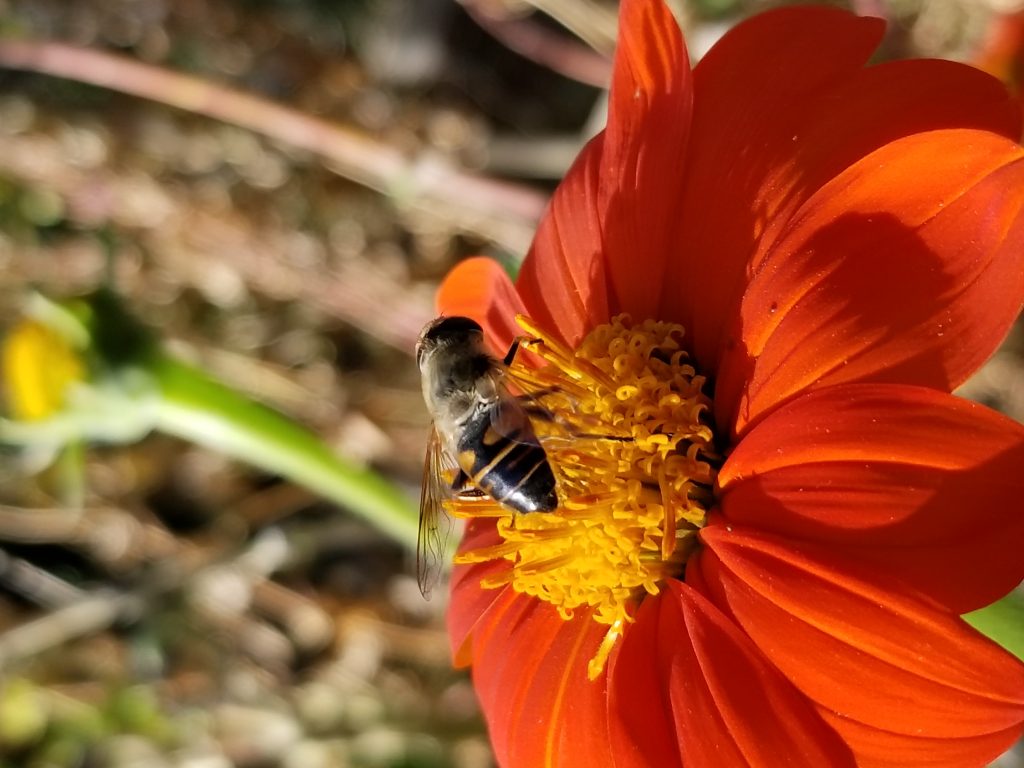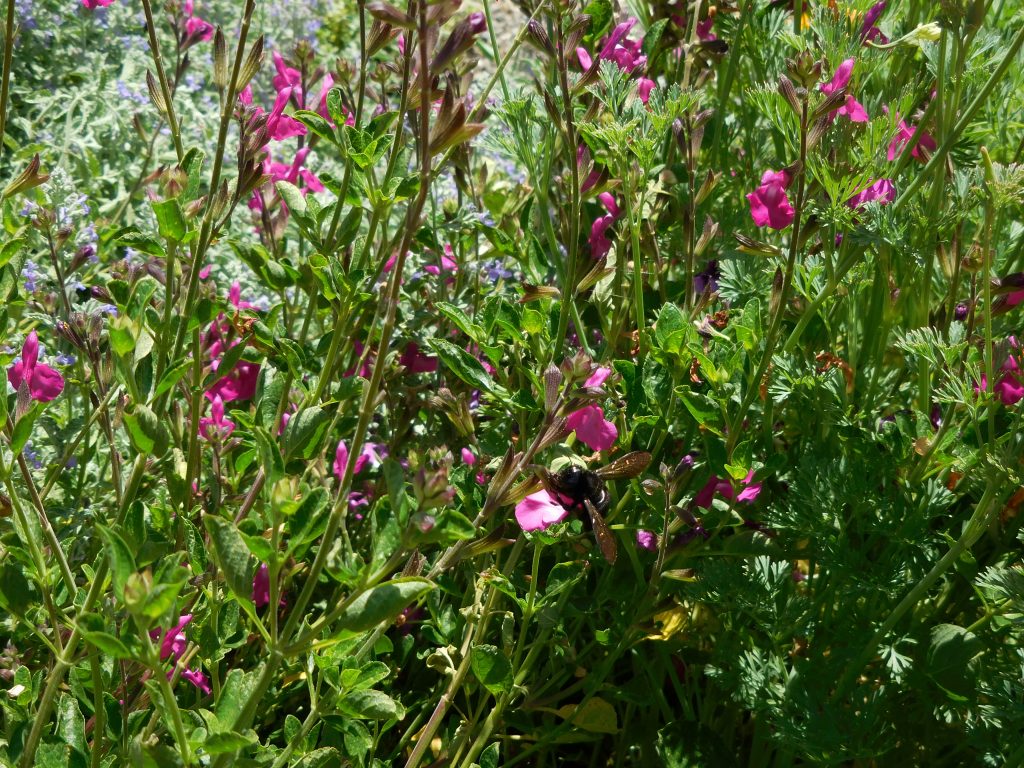Flowers Pollinators Love
Many of us are looking for plants that support pollinators and beneficial insects. Let's focus on four main plant families/subfamilies as a starting point to identify some of those plants.
Asteraceae
Asteraceae is one of the two largest families of plants with over 23,000 species distributed throughout the world. At first glance daisies, asters and sunflowers look like one big flower but are actually a composite of many disc flowers and ray flowers. The central disc consists of florets or tightly-packed individual tubular flowers surrounded by ray flowers that look like petals. The overall appearance as a single flower functions to attract pollinators. You are probably familiar with many members of the Asteraceae family. To name a few: sunflowers, safflowers, canola, chamomile, echinacea, artichokes, dandelion, lettuce, tarragon, radicchio, endive, marigold, golden rod, zinnia.
The flat disc flowers provide an open platform for insects and short tongued bees to sip nectar. Bees will circle around the center as they visit each floret (CA Birds and Blooms p.38). Flat-topped flower heads appeal to non-hovering pollinators, like butterflies and many bee species that need a “landing pad” while feeding. The tiny flowers clustered together help save energy for the pollinator when moving from one bloom to the next and increases the number of insects that can forage on the bloom at the same time. Some asters, such as dandelion and thistle, contain only tubular flowers.
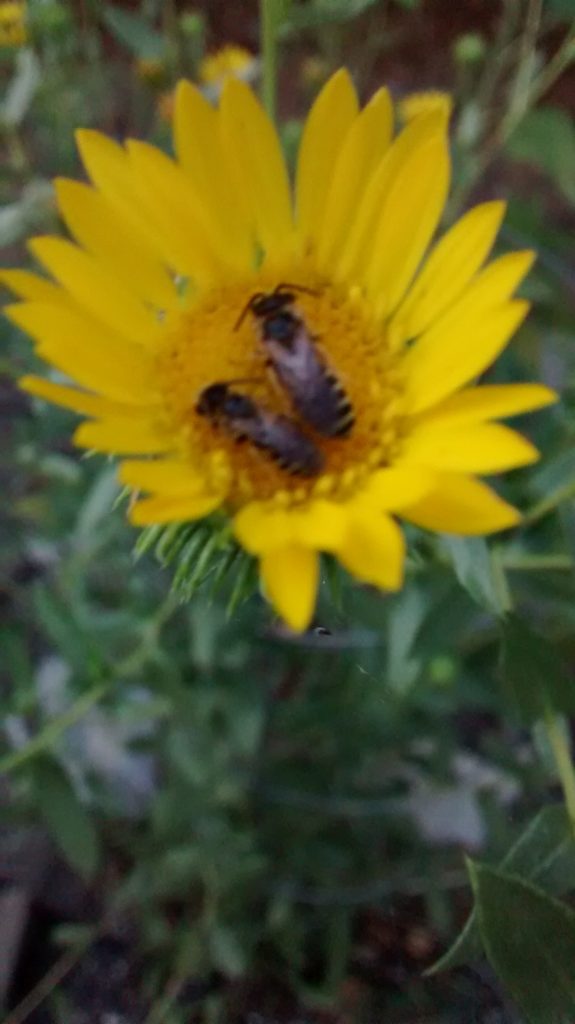
Great Valley Gumweed (Grindelia camporum) This plant is native to California and Baja California. The flower head fills with a copious white exudate, especially during the early stages of blooming. It is a traditional Native American medicinal plant, used by the Indigenous peoples of California and also a major pollinator attractant. Drought and salt tolerant, it persists into late summer (May to November). Grindelia attracts honey bees, native bees, syrphid flies and butterflies. It is a gangling perennial that can grow to six feet. Mine was taken over by Salvia 'Bees Bliss' but I was able to propagate another Gumweed elsewhere.
Yarrow (Achillea millefolium) is a California native plant that is drought tolerant. It has evergreen foliage that is frond-like and fragrant. It has graceful clusters of white flowers that bees and butterflies visit to sip nectar from spring through summer. Good for full sun to part shade and grows to 1' high by 2' wide. There are many cultivars and hybrids that come in pink, magenta, or yellow-orange colors.
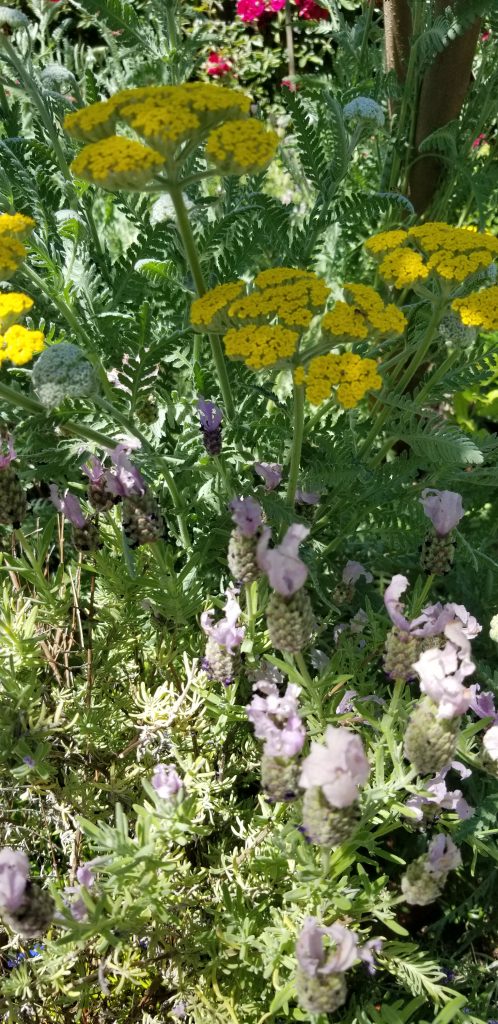
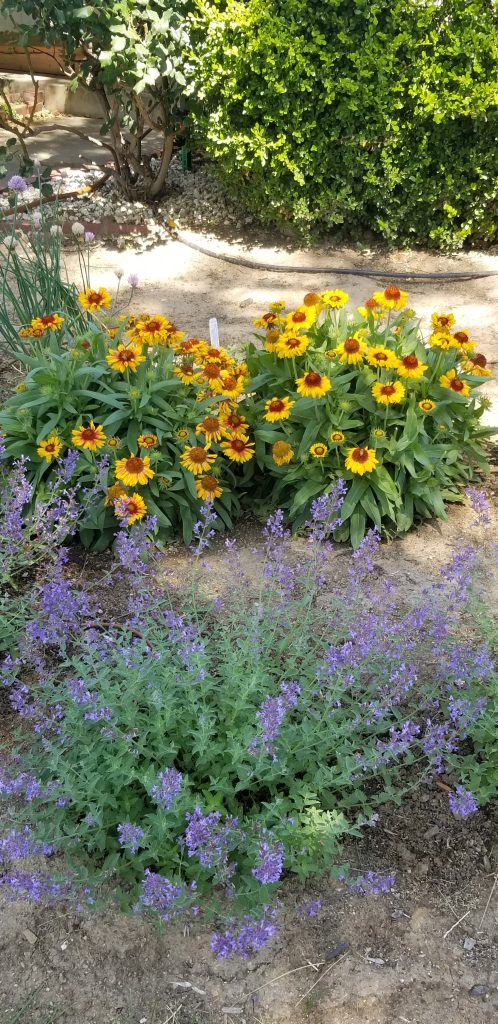
Blanket Flower (Gaillardia x Grandiflora) is a short lived perennial that grows to 2-3 feet high and 1-2 feet wide and blooms from May to September. There are 15+ species of Gaillardia as well as hybrids and flowers that may come in yellow, orange, red with maroon to orange banding at petal bases. Gaillardia self-seeds easily and readily colonizes in the garden and in naturalized areas. In areas where goldfinches are present, gardeners should consider leaving some spent flower-heads for the birds. (Gaillardia above, Catmint 'Junior Walker' below)
Mexican Sunflowers (Tithonia Rotundifolia) Mexican sunflowers are annuals that can grow 3- 8 feet in full sun that bloom summer to fall. These are tall plants with many open faced blooms perfect for butterflies. I’m partial to this plant as I have had a monarch butterfly visit and often have hummingbird visits.
Lamiaceae
Salvia is the largest genus of plants in the Mint family(Lamiaceae) with nearly 1000 species. Two percent of these are California sages. Sage used in cooking (Salvia offiniales) is also a member of the Salvia genus. Salvias like other members of the mint family have square stems, are aromatic and colorful. The flowers have five fused petals, two above and three below forming two lips so are called bilabiate. There are annuals, biennials, perennials, sub-shrubs and shrubs. Many salvias have an extended blooming season and attract hummingbirds, butterflies and bees.
Salvias have an unusual pollination mechanism called the staminal lever mechanism. As the bee inserts its head into the corolla, the stamen acts as a lever that taps the bee with pollen on the face or back where the bee can’t reach it. The saliva is a nototribic flower that attempts to conserve pollen. A group of bee species have adaptations for collecting pollen from these flowers. Stout hairs on their faces allow them to collect pollen from their faces with their forelegs after vibrating within the corolla. (Apidae, Magachilidae Halictide, Andranidae and Colletidae.)
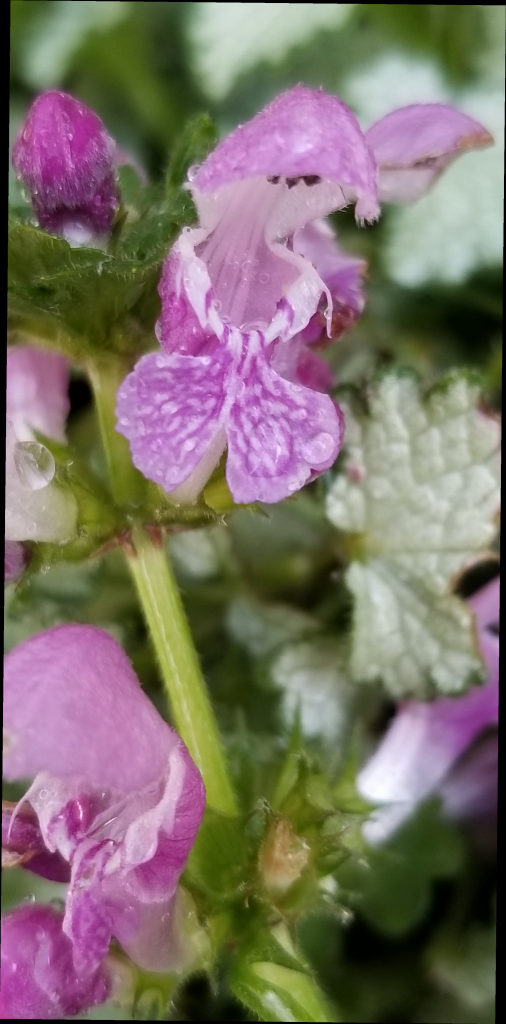
Lamiaceae
Salvia is the largest genus of plants in the Mint family(Lamiaceae) with nearly 1000 species. Two percent of these are California sages. Sage used in cooking (Salvia offiniales) is also a member of the Salvia genus. Salvias like other members of the mint family have square stems, are aromatic and colorful. The flowers have five fused petals, two above and three below forming two lips so are called bilabiate. There are annuals, biennials, perennials, sub-shrubs and shrubs. Many salvias have an extended blooming season and attract hummingbirds, butterflies and bees.
Salvias have an unusual pollination mechanism called the staminal lever mechanism. As the bee inserts its head into the corolla, the stamen acts as a lever that taps the bee with pollen on the face or back where the bee can’t reach it. The saliva is a nototribic flower that attempts to conserve pollen. A group of bee species have adaptations for collecting pollen from these flowers. Stout hairs on their faces allow them to collect pollen from their faces with their forelegs after vibrating within the corolla. (Apidae, Magachilidae Halictide, Andranidae and Colletidae.)
Autumn Sage (Salvia greggii), an evergreen shrub comes in many colors: reds, raspberry, corals, pinks, purple, and white. Autumn Sage blooms from early summer through the fall. It is a compact sub-shrub with small leaves. A great choice for a drought tolerant garden and hot climates. Salvia greggii attracts butterflies and hummingbirds. I originally bought an 'orchid glow' and it apparently reseeded elsewhere in my yard and the new plant has red blooms.
Mexican Bush Sage (Salvia leucantha) This saliva is more shrub-like, growing to 3-5 ft. The flowers have purple bracts, with white or purple blooms. The leaves are a grey-green color. Leucantha is a hummingbird and butterfly favorite. Very drought tolerant. A great choice for flower beds. The velvety flower spikes also make a nice addition to a floral arrangement or a wreath. Zones 8 and above.
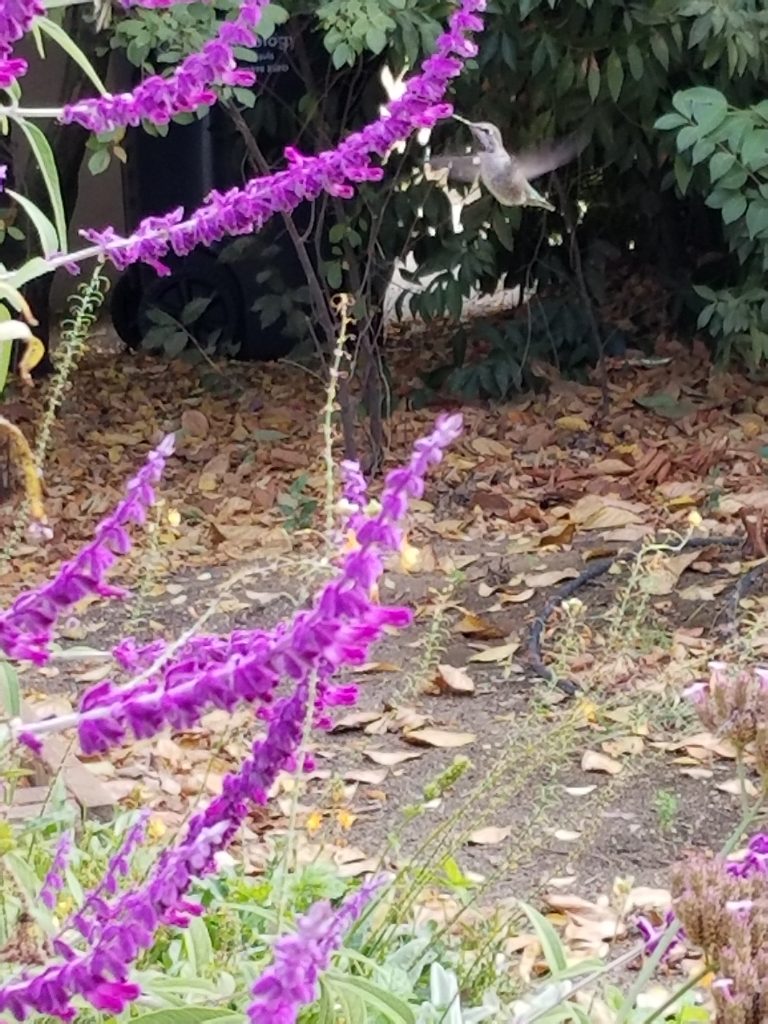
Other Members of the Mint Family
Coyote mint (Monardella villosa) is a small flowering shrub that grows to be around two feet tall and three feet wide that blooms from May through August. Coyote mint is native to Central and Northern California and southern Oregon. It attracts a wide range of butterflies; from the Western Tiger Swallowtail, Gulf Fritillary, Mourning Cloak, Blues and Skippers. Coyote Mint also attracts native bees and hummingbirds.
Agastache 'Purple Haze' (Hyssop) is a variety of Hummingbird Mint with, dark blue-violet flowers on 30-36" tall spikes that blooms from July to first frost. Hummingbird Mint (also known as hyssop or anise-hyssop) is a common name used to describe multiple species of flowering plants within the genus known as Agastache.
Milkweed (Asclepsia, Apocynaceae, the dogbane family)
You may already know that milkweeds are the plant host for the Monarch butterfly. A host plant is the plant on which butterflies lay their eggs, then the larvae (caterpillars) eat the plant. In addition to being the larval plant for the Monarch, milkweeds are also a reliable source of nectar and a large number of insects eat it. Although monarchs visit milkweeds for nectar, the swallowtail butterflies and Nymphalis species (California tortoiseshell) are more frequent visitors. There are fifteen species of California native milkweed. Milkweed is named for the milky latex sap inside that contains chemical toxic to animals. For this reason, milkweed have been perceived as a threat to livestock as well as a crop weed.
When a pollinator arrives at the milkweed bloom their foot can slip into the stigmatic slit or trap door in the blossom and come away with pollinia attached to their foot. If the pollinator gets away it will carry the pollinia to another blossom to provide pollination.
There are a number of milkweed varieties to choose from. You want to choose a native milkweed. If you have or choose tropical milkweed, please prune it back in the fall. Native milkweed die back in the fall and the butterfly will migrate to their overwintering grounds. The Monarch butterfly can be plagued with a protozoan called Ophryocystis elektroscirrha or OE. By migrating away each year the exposure to OE is decreased.
OE is transmitted when the caterpillar eats OE spores that have been deposited on its egg casing and milkweed by an infected adult. The parasites undergo sexual reproduction multiplying inside the larva and dormant spores are formed on the scales of the developing butterfly and into the chrysalis stage. Most of the spores are on the butterfly’s abdomen but are also found on other parts of the body. One website likened the spores to glitter on a Christmas card that sprinkle out (all over) as you open the card, being transmitted on milkweed and deposited on the eggs. Spores allow the parasite to survive in the environment, outside a host. At this point any damage that may have occurred is done to the adult butterfly as the spores are now dormant until eaten by another larva. At high doses there may be decreased survival, decreased lifespans, smaller wing span, decrease body mass, and decreased flight ability.
This problem is avoided with native milkweeds that go dormant and the monarch moves to their nesting sites. If you absolutely have to have tropical milk weed, prune the milkweed stalks to about 6 inches in height during the fall and winter months to discourage monarchs from establishing winter-breeding colonies. Cutting back the milkweed will also help to eliminate OE spores that may be present on the plant. Be sure to add other nectar plants for the adult butterfly such as gaillardia, sweet alyssum, Golden rod, Joe pye weed, asters or phlox.
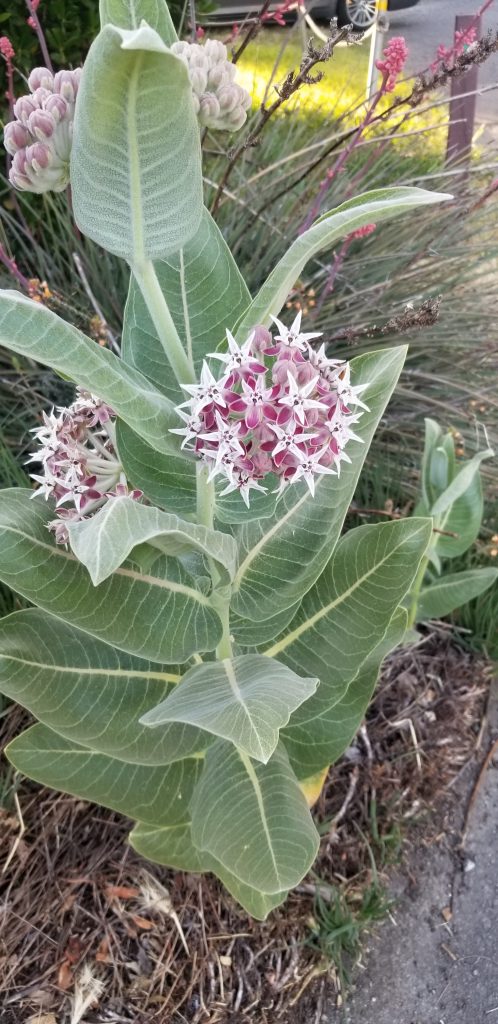
Cucurbits
You may already know that squash has separate male and female flowers. Pollen from the male flower must be transferred to the female flower for fruit development to occur. Since the flowers require multiple visits from pollinators for the fruit to form properly, it’s important to assure an adequate numbers of bees. If you go out early, you may find male squash bees have slept in the closed flowers overnight.
Honey bees and other native bees visit squash as well as the squash bee. Bumble bees (Bombus spp.), carpenter bees (Xylocopa spp.), and squash bees (Peponapis pruinosa) may fulfill much of the pollination requirement of various cucurbit species.
Squash bees (Peponapis pruinosa) occur throughout much of the United States and Mexico, where they are important pollinators of plants in the genus Cucurbita. This includes summer squash, winter squash, zucchini, pumpkins, and many gourds (but not cucumbers). Squash bees are most easily recognized by their visits to these flowers starting around sunrise, before other bees are active. (Females: orange, hairier legs, Males: yellow, longer antennae, brown strip, sleep overnight in squash blossoms.)
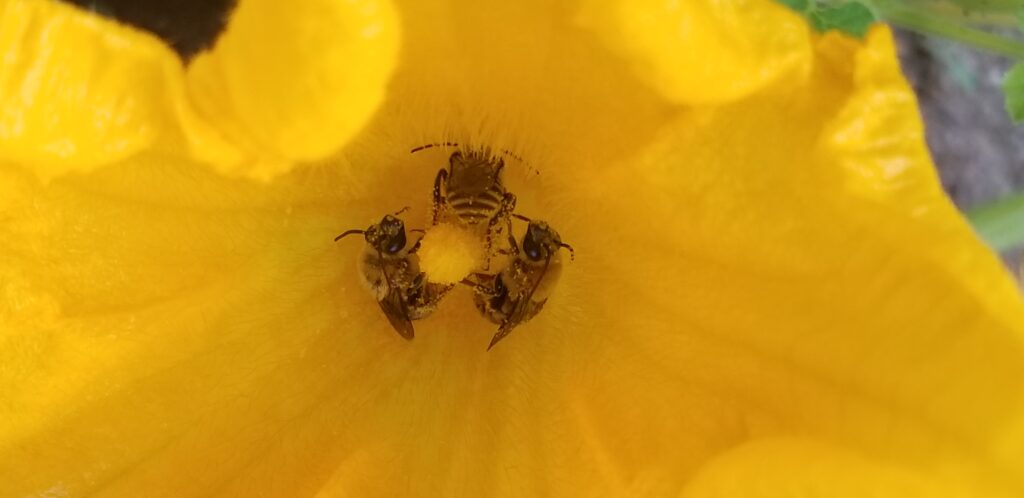
Squash Bees are ground dwellers that burrow 18” deep tunnels in the ground near squash plants. Since these bees are ground dwellers, we need to leave some bare ground near the garden and avoid tilling. These bees have to burrow out of the ground in spring and can not get through thick mulch.
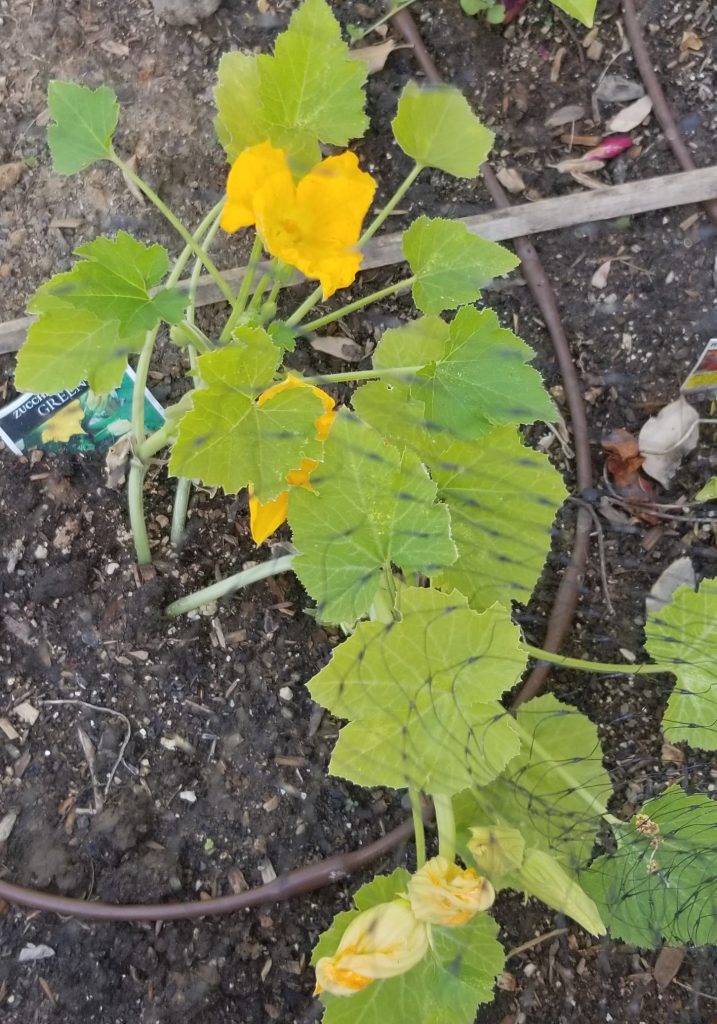
References for Flowers Pollinators Love
The National Wildlife Federation https://www.nwf.org/Garden-for-Wildlife/About/Native-Plants
USDA Gardening for Pollinators https://www.fs.fed.us/wildflowers/pollinators/gardening.shtml
American Forest: A Call for Back yard Biodiversity, Douglas Tallamy, 2009 https://www.americanforests.org/magazine/article/backyard-biodiversity/
https://ucanr.edu/squash_bees/
https://www.fs.fed.us/wildflowers/pollinators/pollinator-of-the-month/squash_bees.shtml
Salvia greggii
Los Angeles Times, Sep. 9, 2004. https://www.latimes.com/la-hm-salvia9sep09-story.html
https://www.fws.gov/news/blog/index.cfm/2016/7/1/Milkweed--For-More-Than-Monarch-Butterflies
Hadley, Debbie. (2020, August 26). 7 Insects Commonly Found on Milkweed. Retrieved from https://www.thoughtco.com/insects-commonly-found-on-milkweed-4115862
https://www.saveourmonarchs.org/blog/how-to-identify-milkweed-plants-quickly-and-confidently (milkweed latex image)
